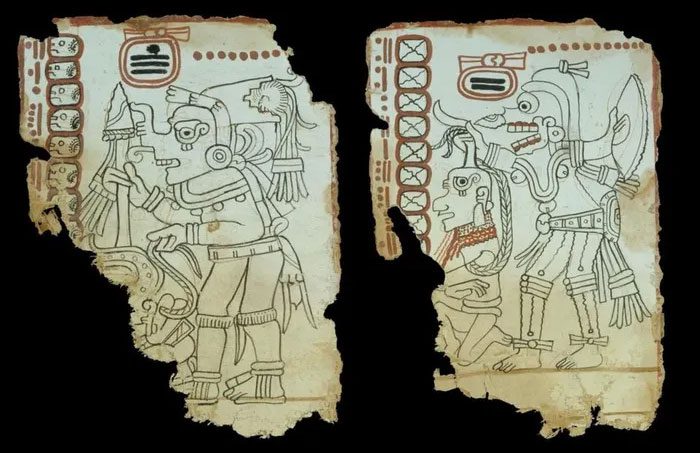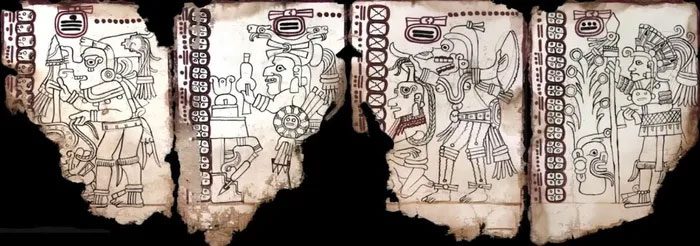The J. Paul Getty Museum in Los Angeles is currently showcasing 10 remaining pages of the ancient book “Codex Maya de México”. The exhibition runs until January 15, 2023.

Page 7 of the “Codex Maya de México”. (Photo: INAH).
According to Hyperallergic, the Codex Maya de México is one of the few remaining collections of Maya hieroglyphs from pre-Columbian times, surviving the destruction of all Maya manuscripts in the 16th century. Believed to date back to 1100, created by a single artist, the book records the 584-day cyclical movement of Venus.
This book is considered the oldest surviving manuscript in the Americas and is rarely displayed to the public.
The Maya notebook is an artifact borrowed from the National Library of History and Anthropology in Mexico City. The J. Paul Getty Museum states that this documentary exhibition aims to highlight the sophisticated dating methods used by the Maya civilization to decode and describe the universe over 900 years ago.

From pages 4 to 7 of the Codex Maya de México. (Photo: INAH).
This exhibition also clarifies the process of authenticating the book. For a long time, due to its mysterious excavation history, unusual content, and form, the book was suspected to be a copy. Notably, it lacks the hieroglyphic texts that are present in three other surviving Maya notebooks stored in Germany, France, and Spain.
However, this issue was resolved in 2016. A group of pre-Columbian history researchers authenticated this special notebook after analyzing the pigments of the minerals in the book and using carbon dating to determine the age of the bark paper used.
Mary Miller, one of the researchers who later became the director of the Getty Research Institute, believes that showcasing this material helps to reevaluate the notion that science and mathematics were only developed within the frameworks of European cultures.
Álvaro D. Márquez, an education specialist at the Getty Museum, shared with Hyperallergic: “I know a school with students of Maya descent will visit this notebook. I think it is very important to bring a culturally and spiritually significant artifact to the public, especially when it holds meaning for a minority community.”


















































